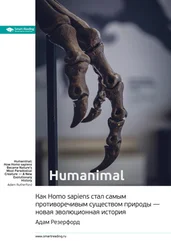Cohen, D. B. (1999). Stranger in the nest: Do parents really shape their child's personality, intelligence, or character? New York: John Wiley & Sons.
Corballis, M. C. (1991). The lopsided ape: Involution of the generative mind. New York: Oxford University Press.
Cosmides, L., & Tooby, J. (1992). Cognitive adaptations for social exchange. In J. Barkow, L. Cosmides, & J. Tooby (Eds.), The adapted mind: Evolutionary psychology and the generation of culture. New York: Oxford University Press.
Cosmides, L., & Tooby, J. (1997). Evolutionary psychology: A primer [On-Line]. Available: http:// www.psych.ucsb.edu/research/cep/primer.htm
Cosmides, L., & Tooby, J. (2000). The cognitive neuroscience of social reasoning. In M. S. Gazzaniga (Ed.), The New Cognitive Neuro-sciences, 2nd ed. Cambridge, MA: MIT Press.
Costa, P. T, Jr, & McCrae, R. R. (1998). Trait theories of personality. In D. R Barone & M. Hersen (Eds.), Advanced personality. The Plenum series in social/clinical psychology. New York: Plenum Press.
Crick, E (1981). Fife itself: Its origin and nature. New York, NY: Simon and Schuster.
Crick, E (1994). The astonishing hypothesis: The scientific search for the soul. New York: Charles Scribner's Sons.
Cronin, C. (1980). Dominance relations and females. In D. Omark, E Strayer, & D. Freeman(Eds.), Dominance Relations: An Ethological View of Human Conflict and Social Interaction. New York: Garland Publishing, Inc.
Curtiss, S. (1989). The independence and task-specificity of language. In A Bornstain & J.
Bruner (Eds.). Interaction in human development. Hillsdale, NJ: Eribaum.
Daly, M., & Wilson, M. (1995). Discriminative parental solicitude and the relevance of evolutionary models to the analysis of motivational systems. In M. S. Gazzaniga (Ed.). The cognitive neurosciences. Cambridge, MA: MIT Press.
Daly, M., & Wilson, M. (1998) The evolutionary social psychology of family violence. In С. В. Crawford, D. L. Krebs, et al. (Eds.), Handbook of evolutionary psychology: Ideas, issues, and applications. Mahwah, NJ: Eribaum.
Darwin, C. (1859). On the origin of species by means of natural selection. London: Murray.
Darwin, C. (1868). The voyage of the beagle. London: Heron books.
Darwin, C. (1871). The descent of man, and selection in relation to sex (2nd ed.). London: Murray.
Darwin, C. (1872). The expression of the emotions in man and animals. London: Murray.
Darwin, F. (1887). The life and letters of Charles Darwin. New York: Appleton.
Dasser, V. (1985). Cognitive complexity in primate social relationships. In R. A. Hinde, A. N. Perret-Clemont, & J. Stevenson-Hinde (Eds.), Social relationships and cognitive development. Oxford: Clarendon Press.
Davies, P. (1994). The last three minutes. New York: Basic Books.
Davis, K. (1948). Human society. New York: MacMillan.
Dawkins, R. (1989). The. selfish gene (2nd ed.). Oxford: Oxford University Press
De Waal, F. (1982). Chimpanzee politics. London: Jonathan Cape.
Dennett, D. (1995). Darwin's dangerous idea: Evolution and the meaning of life. New York: Simon & Schuster.
Diamond, J. M. (1992). The third chimpanzee: The evolution and future of the human animal. New York: Harper Collins.
Diamond, M. C. (1988). Enriching heredity: The impact of the environment on the anatomy of the brain. New York: Free Press.
Dissanayake. E. (1988). What is art for? Seattle, WA: University of Washington Press.
Dissanayake, E. (1992). Homo Aestheticus: Where art comes from and why. New York: Free Press.
Dissanayake, E. (1999). «Making Special»: An un-described human universal and the core of a behavior of art. In В. Cooke & F. Turner (Eds.), Biopoetics: Evolutionary exploration in the arts. Icus Books Pub.
Bollard J./ & Miller, N. (1950). Personality and psychotherapy: An analysis in terms of learning, thinking, and culture. New York: McGraw-Hill.
Dunbar, R. (1996). Grooming, gossip, and the evolution of language. Cambridge, MA: Harvard University Press.
Eaton, B. S., Eaton, S. В., Ill, & Konner, M. J. (1999). Paleolithic nutrition revisited. In W. R. Tre-vathan, E. 0. Smith, & J. J. Mckenna (Eds.), Evolutionary medicine. New York: Oxford University Press.
Edelman, G. M. (1987). Neural Darwinism. New York: Basic Books.
Eibl-Eibesfeldt, I. (1989). Human ethology. Chicago: Aldine.
Eibl-Eibesfeldt, I. (1998). Us and the others: The familial roots of ethnonationalism. In I. Eible-Eibesfeldt, & F. K. Salter, (Eds.), Indoctrinability, ideology, and warfare: Evolutionary perspectives. New York: Berghahn Books.
Elliott-Smith, G. (1927). The evolution of man. Essays. (2nd ed.) London: Oxford University Press.
Ellis, B. J., & Garber, J. (in press). Psychosocial antecedents of pubertal maturation in girls:
Parental psychopathology, stepfather presence, and family and marital stress. Child Development.
Ellis, L. (1993). Social stratification and socioeco-nomic inequality. (Vol I.) Westport, CT: Praeger Publishers.
Eysenck, H. J. (1983). A biometrical-genetical analysis of impulsive and sensation seeking behavior. In M. Zuckerman (Ed.), Biological bases of sensation seeking, impulsivity, and anxiety. Hillside, NJ: Eribaum.
Eysenck, H.J. (1999). The psychology of politics. New Brunswick, NJ: Transaction Publishers.
Eysenck, H. J., & Eysenck, M. W. (1985). Personality and individual differences: A natural science approach. New York: Plenum.
Feldman, R. S. (1999). Child development: A topical approach. Upper Saddle River, NJ: Prentice-Hall.
Fisher, H. (1998). Anatomy of love: The natural history of monogamy, adultery and divorce. New York: Norton.
Fisher, R A. (1930). The genetical theory of natural selection. Oxford: Clarendon.
Galiup, G. G. (1994). Self-recognition: Research strategies and experimental design. In S. T. Paker and R. W. Mitchell, M. L. Boccia (Eds.), Self-awareness in animals and humans: evelopmental perspectives. New York: Cambridge University Press.
Galiup, G. G., & Suarez, S. D. (1986). Self-awareness and the emergence of mind in humans and other primates. InJ. Suls & A. G. Green-wald (Eds.). ETC.
Gardner, R. (1998). The Biology of leadership. Presented at the NLU Psi Chi Distinguished Speaker Series, Northeast Louisiana University, Monroe, LA.
Gelman, S. A., Coley, J. D., & Gottfried, G. M. (1994). Essentialist beliefs in children: The acquisition of concepts and theories. In L A Hirschfeld, S. A. Gelman, etal. (Eds.), Mapping the mind: Domain specificity in cognition and culture. New York: Cambridge University Press.
Ghesquiere, J., Martin, R D, & Newcombe, E (Eds.). (1985). Human sexual dimorphism. Washington, DC: Taylor& Francis.
Gillis, J. (1982). Too tall, too small. Champaign, II. Institute for Personality and Ability Testing.
Goodall, J. (1971). In the shadow of man. Boston: Houghton Mifflin.
Goodall, J. (1986a). The chimpanzees of Gombe. Cambridge: Belknap Press.
Goodall, J. (1986b). The chimpanzees of Gombe: Patterns of behavior. Cambridge, MA: Harvard University Press.
Grammer, K. (1996, June). The human mating game: The battle of the sexes and the war of signals. Paper presented at the 8th annual Human Behavior and Evolution Society meetings, Evanston, Illinois.
Gray, J. (1987). The neuropsychology of stress and anxiety. London: Oxford University Press.
Gregory R. L. (Ed.). (1987). The oxford companion to the mind. Oxford: Oxford University Press.
Gruter, M. (1991). Law and the mind: Biological origins of human behavior. Newbury, С A: Sage Pub.
Hergenhahn, B. R. (1997). An introduction to the history of psychology, (3rd Ed.). Boston:
Brooks/Cole Publishing Company.
Herman, L. M. (1987). Receptive competencies of language-trained animals. In J. S. Rosenblatt, C. Beer, M. C. Busnel, & P. J. B. Slater (Eds.), Advances in the study of behavior (Vol.17, pp. 1-55). San Diego, CA: Academic Press.
Читать дальше











